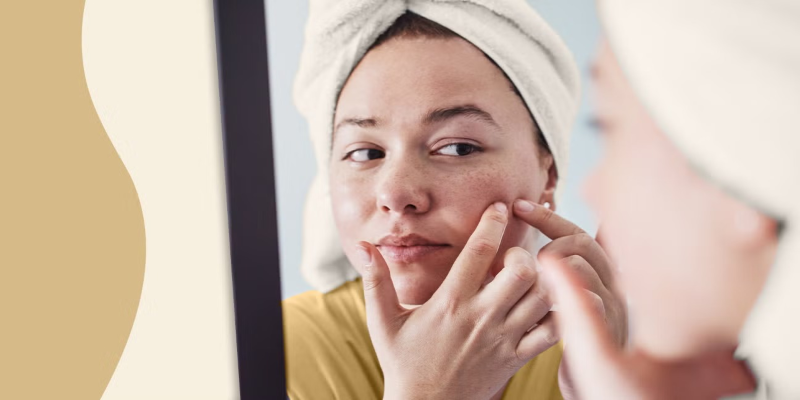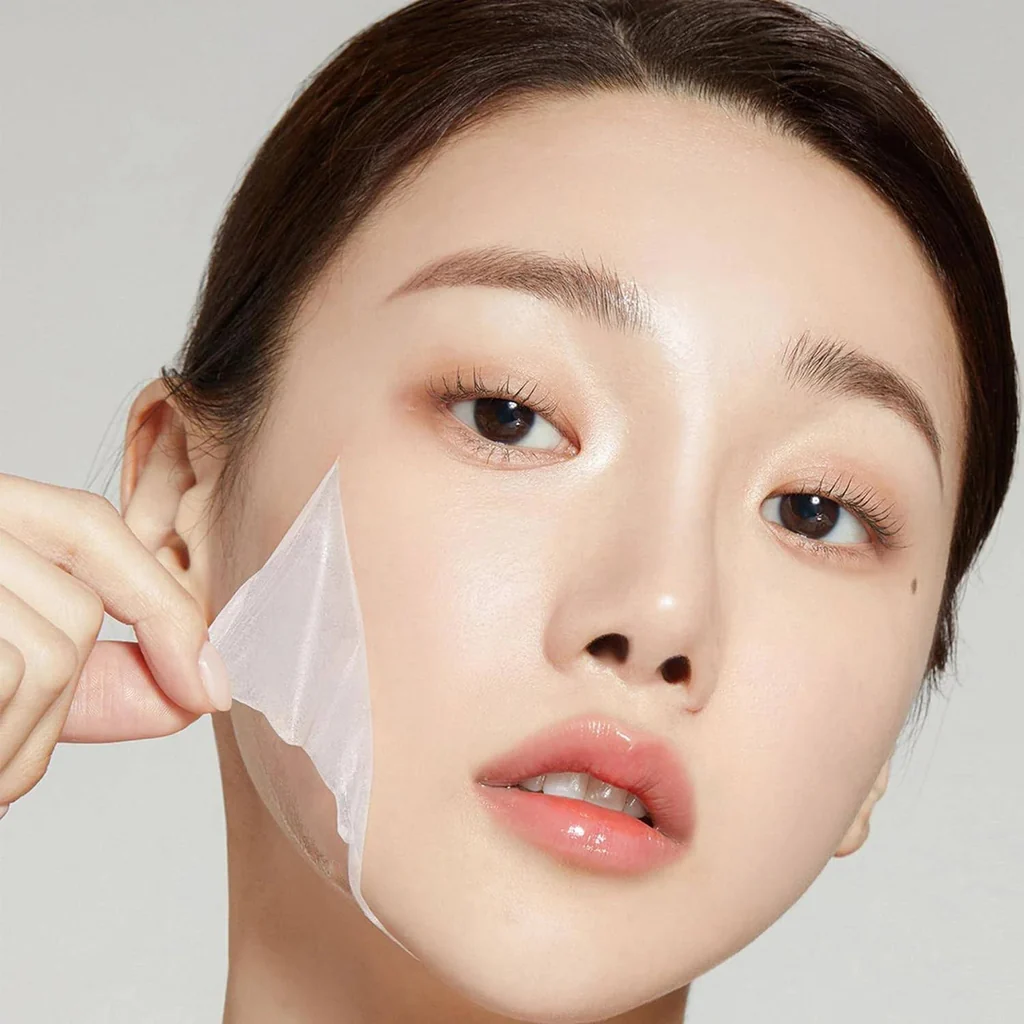How to Clear Your Skin Fast
The treatment of acne has historically presented a frustrating and difficult skincare routine for many people, regardless of age; however, by 2025, this will become easier. First, more effective actives, such as adapalene, salicylic acid, and azelaic acid, are now available in gentler, over-the-counter formulas. Second, smart skincare tools like LED therapy devices and microdot pimple patches are now available to provide faster results without irritation. Third, microbiome-friendly products now treat your breakouts and pimples without disrupting your skin’s natural barrier. Those with sensitive skin can find solutions to their concerns. .If your it is hormonal, blackheads, or occasional breakouts, the best acne treatments of 2025 can help your skin heal quickly and safely

Table Of Contents
- Why acne happens
- Top acne treatments of 2025
- How to build a routine to avoid it
- Tips to Support Acne treatment
- When to see a Dermatologist
Why Acne happens
It occurs when hair follicles are blocked by oil, dead skin cells, and bacteria. The blockage causes inflammation, leading to breakouts such as pimples, blackheads, and cysts. Hormonal changes from puberty, menstruation, or stress can also increase oil production, which can lead to an increased chance of its flare-up. In addition, if someone has poor skincare habits, like over-cleansing or the use of comedogenic products that can exacerbate breakouts, they may be disrupting the skin microbiome. Diet can also trigger acne in some people, especially those who consume high-sugar foods or high-dairy-content foods. Additionally, genetics plays an important role in determining who will or will not have it. Knowing the true underlying causes of it, or at least the contributors, will help one evaluate what treatment is best, with its best treatments of 2025, More advanced formulations of retinoids, salicylic acid-associated products etc

Top acne treatments of 2025
| Treatment / Tip | How It Works | Best For / Usage |
|---|---|---|
| Adapalene (Retinoid Revolution) | Speeds up skin cell turnover, prevents clogged pores, reduces inflammation, promotes healing. | Whiteheads, blackheads, inflammatory acne. Start slow to avoid irritation. |
| Salicylic Acid (BHA) | Penetrates pores, dissolves oil and dead skin cells, keeps pores clear. | Oily, acne-prone skin. New formulas include soothing agents. |
| Benzoyl Peroxide (Bacteria Killer) | Kills acne-causing bacteria, reduces inflammation, promotes faster healing. | Inflamed pimples and pustules. Micronized versions reduce dryness. |
| Azelaic Acid (Multitasker) | Kills bacteria, normalizes skin cell production, fades dark spots, calms redness. | Sensitive and rosacea-prone skin. |
| Niacinamide (Soothing Superhero) | Reduces redness, controls oil, strengthens barrier, fades scars. | All skin types; pairs well with salicylic acid or adapalene. |
| LED Light Therapy (High-Tech Healing) | Blue light kills bacteria; red light reduces inflammation and boosts healing. | Use 10–15 mins, 2–3 times/week. Combined devices offer dual benefits. |
| Microdot Pimple Patches (Precision Targeting) | Deliver actives directly into blemishes via micro-needles, speed healing, prevent picking. | Targeted treatment for active pimples. |
| Gentle Cleansing | Removes dirt and oil without irritating skin. | Use mild, non-stripping cleansers daily. |
| Consistent Sunscreen Use | Protects skin from UV damage that worsens scars and pigmentation. | Broad-spectrum SPF 30+ daily. |
| Personalized Routine | Combine treatments based on skin type and acne severity. | Customize for best results. |
How to build a routine to avoid it
In Morning Routine
- First, start your morning by cleansing with a gentle, non-stripping cleanser that removes excess oil and impurities without irritating your skin.
- Next, apply a treatment serum containing niacinamide or salicylic acid to help prevent clogged pores and control oil.
- Then, follow with an oil-free, non-comedogenic moisturizer to keep your skin hydrated throughout the day.
- Finally, always finish your morning routine with a broad-spectrum SPF 30+ sunscreen to protect your skin from UV damage and prevent dark spots.
In Evening,
- Begin by using the same gentle cleanser to wash away dirt and makeup.
- Afterward, apply a treatment such as adapalene or azelaic acid, starting every other night to minimize irritation.
- Then, hydrate your skin with a soothing moisturizer to repair the skin barrier.
- If needed, use spot treatments like microdart patches or benzoyl peroxide gel on active pimples to accelerate healing.

Tips to Support Acne treatment
Treating your acne goes beyond just using the right treatment products. With consistent acne treatment, people can often incorporate lifestyle or habitual changes to complete the acne regimen. First, eating a good diet can make a difference, and you should try to eat a balanced and nutritious diet while limiting the quantity of high glycaemic foods, including refined sugar (like candy) and processed carbs, as they can trigger breakouts. Secondly, it will be a good idea to try and control stress levels caused by work and other sources by managing stress through yoga, meditation, breath work, or other activities you are comfortable with. Stress can contribute to your acne flare-ups. Likewise, also need to consciously try to avoid touching your face throughout the day; you need to allow your skin to recover. Touching your face can transfer bacteria and oil from your hands to your face, making it worse.

When to see a Dermatologist
We know over-the-counter medications may help most people with mild acne, but there are times when it is necessary to see a dermatologist. The first reason is if your acne is severe or if you are experiencing cystic acne. Cystic acne can cause large, painful deep pimples and can increase your risk of developing scars if not properly treated. Second, if you have tried multiple over-the-counter options with no improvement for 8-12 weeks, then seeing a dermatologist is warranted. Dermatologists can prescribe stronger medication, such as retinoids or antibiotics, and will likely have more experience being able to find suitable medications in a shorter period of time. The third reason: if your acne is causing a significant amount of emotional distress or detracting from your self-esteem, then seeing a dermatologist will allow them to treat more than just your skin. Acne can take a mental toll. It may help to speak to a specialist when you are struggling with boiling frustration. The last reason is if you are worried about scarring or hyperpigmentation.
Advancements in technology, potent ingredients, and personalized skincare make treating acne in 2025 easier and more effective than ever. The best acne treatments of 2025 are precise in addressing the underlying causes of acne, the symptoms of acne, and make use of the newest active ingredients, such as adapalene gels, salicylic acid, LED devices, and microdart patches. while you want to clear your skin as fast as possible, consistency and patience with your treatment plan is key – most treatments will take a while before you notice significant improvement (4 to 8 weeks).
FAQ’S
1. What are the best treatments for 2025
The best-acne treatments for 2025 include ingredients like adapalene, salicylic acid, benzoyl peroxide, azelaic acid, and high-tech treatments such as LED light therapy and microdart pimple patches.
2.How long does it take for treatments to work
Most people see improvement in 4-8 weeks, and depending on the severity of your acne and the treatment you’re using, it can take longer.
3. Can treatments cause irritation
Yes, acne treatments such as adapalene or benzoyl peroxide can initially cause dryness or irritation – particularly when you first introduce them to your skin. Start slowly and increase usage slowly to help ease irritation.
4. How often should I use treatments
Typically, you should start with every other night application (or as the product’s label recommends), and when your skin builds tolerance you can increase usage to every night.
5. When should I see a dermatologist
If your acne is severe (e.g. cystic acne) or you do not see any improvement after 8-12 weeks using over-the-counter treatments, etc. or it causes you a lot of emotional distress.
6. Can stress cause acne
Yes, stress can raise levels of the hormone called cortisol, which can lead to acne flare-ups. Taking the time to manage your stress will help prevent breakouts.
7. Does diet cause acne
Some foods can aggravate acne in some people, particularly high-glycaemic or dairy-rich foods. A nutritious diet including a variety of vegetables, fruits, and lean proteins needs to be consumed for healthy skin.
8. Is acne curable
Although acne is not curable in many cases, it is controllable with effective treatment. Most treatments will control the number of breakouts, will prevent scarring and will improve your skin’s texture.
9. How do I prevent scarring
Prevention of scarring will involve not picking or squeezing pimples. Use of a consistent, gentle skin care product and wearing sunscreen daily will give protection to your skin and prevent pigmentation change.
10. Are there any side effects from treatments
Some treatment options will cause dryness and redness including strong products like retinoids and benzoyl peroxides.



